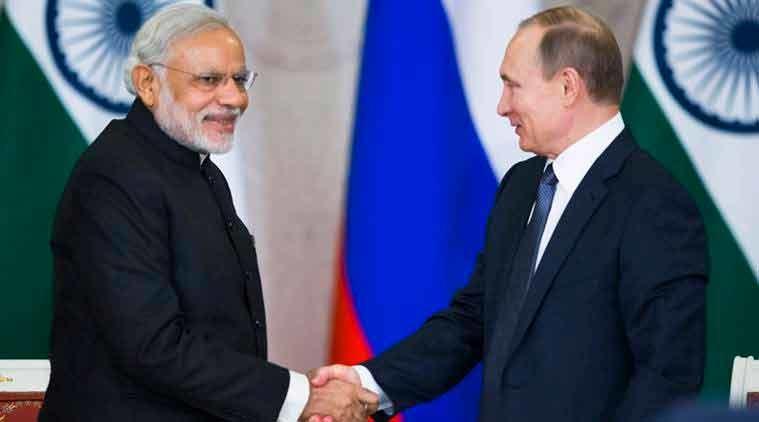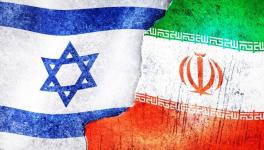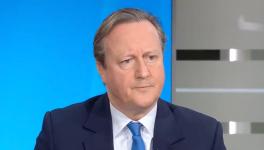India-Russia: A course Correction or Course Reversal?

Image Courtesy: The Indian Express
India’s relations with Russia have lost the warmth of yesteryears, and Russia is no longer considered India’s most reliable international friend. Russia has been drawn close to China. Also, Russia and India do not see eye to eye on Afghanistan where Russia believes that no solution is effective without engaging Taliban, and in turn with the key countries Pakistan and Iran as well. India is wary of anything which places Pakistan at an advantage in Afghanistan. India has been cutting down on purchase of military goods from Russia, and is looking at the US and Israel, captivated by advanced weapon system. The US has also influenced India into accepting its assessment of sources of threat and instability in Asia-Pacific region by simply labeling it as Indo-Pacific. India has signed Logistics Exchange Memorandum of Agreement (LEMOA) – a foundational pact with US – and has also offered access to Indian naval facilities for the US Seventh Fleet among other things. Therefore, after a four-year-long hiatus, it was strange to see the right-wing, pro-US government of Bharatiya Janata Party (BJP) rediscover Russia as India’s most reliable ally.
In a move – presumably driven by desperation – Prime Minister Narendra Modi sought an “informal summit” with Russian President Vladimir Putin, and it was held at the Black Sea resort town of Sochi on May 21. PM Narendra Modi, who is used to spinning tall tales, repeated his performance in Sochi as well, when he claimed that “seeds of the strategic partnership” with Russia were sown by then PM Atal Bihari Vajpayee in 2000. He also claimed that since Putin came to power in 2000, “our relation has been historic”. Being truthful not being his strength, he forgot that the close relations were laid in 1960s and cemented as strategic alliance in 1971 when a “friendship” treaty was signed. After the collapse of Soviet Union in 1989, India had begun to look at the US to fulfill Indian ruling class’s ambition to be counted as a big power. So much so that when US prepared to attack Afghanistan in 2001, India offered to help US mount their aggression. However, even in 2000, Vajpayee government warmed up to Russia only because it was the only major power (other than France) that refused to sanction India after 1998 nuclear bomb test. However, it did refuse to share the cryogenic engine for its space programme. It is, nevertheless, worth noting that RSS and its progenies have ideologically sided with the British Raj (against the Freedom movement) and favoured India joining US-led alliance against the Soviet Union. [See Newsclick on RSS and its US links].
Anyhow, the rush to hold “informal summit” appears to signal a shift away from over-reliance on the US. This was brought to bear on India by several moves of the US Congress (enacting Countering America’s Adversaries Through Sanctions Act or CAATSA) and the US administration (through belligerent trade policies and arm-twisting on patent rights). The intent behind CAATSA was explained by the US assistant secretary of state for political-military affairs Tina Kaidanow, as inviting US sanctions if “any large defense purchase from Russia” were made. She went on to say that “the intent is to emphasise how important it is that Russia’s malign behavior [….] is countered”. She stated that countries should think “about what you are doing when you purchase Russian product”, when there are “positive incentives” to be availed, were these countries to buy US military wares instead. All of this might have set the stage for the informal summit at Sochi.
Claiming that Indo-Russian relations have grown into “special and privileged strategic partnership” since 2000, and thanking Russia for helping India get permanent membership of Shanghai Cooperation Organisation, Indian PM reiterated that the two countries are working together on the International North-South Transport Corridor (INSTC). This is significant because INSTC’s starting point for India was to be Chabahar Port in Iran, which is now in jeopardy because of US’s sanctions on Iran after US unilaterally withdrew from JCPOA. It has all but demanded that Teheran capitulate lest the US “crush” the regime. In other words, India suddenly discovered that US’s moves imperiled India’s vital stakes in its own extended neighbourhood, and stood to harm India’s interests. The cost of getting close to the US was proving to be extraordinarily high.
It is significant that the Modi Government has displayed no enthusiasm in the past four years to sign any major arms deal with Russia. Indian Army leadership told Parliament’s Standing Committee that they want to get rid of “obsolete” (euphemism for Russian arms) weapons and ammunitions. India’s corporate media has tended to play up Russia-China alliance as being against India’s interest, find faults in Russian arms supplies, push for India to procure expensive modern weapons from the US or its allies, highlight the delay in project completion and delivery of spares and components, and highlight the jacked up prices midway through an agreed project – in short, unreliability of Russia as arms supplier and the need to reduce dependence on Russian weapons. These problems are not all made up. They are true too. Russia demands commercial price for its military wares, which was not the case during Soviet era. It has become like any other capitalist country selling weapons. Since 2007, this dependence has come down from 80 per cent to 62 per cent of the total imports.
However, it is equally true that at several critical junctures, Soviet Union, and now Russia has offered to do what no other country ever did: offering weapons, willingness to transfer technology, jointly develop missiles, including letting India lease nuclear submarine. To understand how Russian assistance to India has worked, take note of the fact that Hindustan Aeronautics Ltd (HAL) has offered the Indian Air Force 40 additional Sukhoi fighter jets at a cost which is nearly one third of what the BJP government paid to France for Rafael jets. Thus HAL says they can offer Sukhoi jets at Rs 425 crore a piece as against Rs 1025 crore for each Rafael.
If the motivation for reducing dependence on Russian military ware was guided by need to develop indigenous military capability, it would have been one thing. But reducing dependence on Russian arms became a way to shift to depending on the US – a course adopted by successive Indian governments since economic reforms of 1991. They have increased purchase of arsenal from the US and Israel, two of the most malevolent countries in the world. Seen against this light, after a flip-flop, India has announced its desire to buy Russian arms: S-400 air defense missile system for $5.5 billion, four Grigorovich-class stealth frigates for navy worth $ 4billion, joint production project to build 200 Kamov light helicopters for $ 1 billion and lease another nuclear submarine for $1.5 billion. If any or all of the deals are carried out, it will invite US sanctions, but Indian Government has insisted that it is “not going to allow our defense requirements to be dictated by any other country”. Indian government has followed this by lobbying the US Congress and the US administration to “exempt” India. Problem is that with the US, everything carries a price tag and “exemption” will be no free lunch. So what argument will resonate with the US and what price will the US extract from India or Indian government willing to pay for this?
There is also the apprehension that ideologically rooted governments such as BJP have a hard time giving up their dogma and are only capable of ‘baby’ steps. So rather than informal summit with Putin heralding a course correction, it may simply be a way to assuage Indian public worried over threat to India’s foreign policy and security due to the US’s policies such as CAATSA, projecting that India will not succumb to the US diktat. However, what remains to be seen is whether India will acquire S-400 air defense missiles, or four stealth frigates, or produce light helicopters or lease another nuclear submarine or will negotiations on all these drag on? We do not know how India will pay for these weapons when US sanctions affect banking transactions with Russia. If India shows determination to buy from Russia, would the US let this happen? If so what ‘pound of (India’s) flesh’ will they ask for? Remember there are no free lunches where the US is concerned.
Get the latest reports & analysis with people's perspective on Protests, movements & deep analytical videos, discussions of the current affairs in your Telegram app. Subscribe to NewsClick's Telegram channel & get Real-Time updates on stories, as they get published on our website.
























